Nickels - A Temporary coin that stood the test of time!
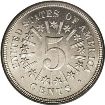
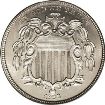
Initially, nickels were to be made on a temporary basis to replace five cent postage currency and U.S five cent fractional notes. However, this coin began production in 1866 and has undergone several changes throughout its long history. Despite all else it still endures today.
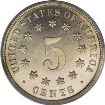
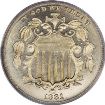
During the American Civil War all US Coins were hoarded by the general population because they had intrinsic value in uncertain times. Due to this behavior the
Federal Government issued three and five cent fractional notes. These notes became
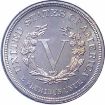
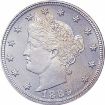
dirty and worn out very quickly from use so they needed to be replaced with a more durable substitute. The logical choice was a five cent coin to match the three cent one that started in 1865.
When the need for a five cent coin became
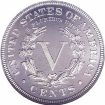
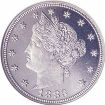
apparent to Mint Director James Pollock he prepared a bill for Congress. Pollock was adamantly opposed to striking nickel-based coins due to dies wearing out pre-maturely and even breaking under pressure. He prepared a bill for Congress authorizing a five cent coin made of the hard brittle metal. This
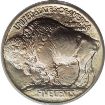
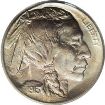
bill authorized a five cent coin weighing 60 grains or 3.88 grams. Congress expressed wanting to use the metric system and decided to have the new coins weigh 5.0 grams. When the decision was made to raise the weight the legislation passed both houses without discussion on the same day it was
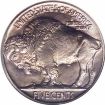
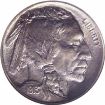
presented.
Joseph Wharton a very prominent businessman, and friend to congressional leaders, owned a monopoly on nickel-mines during the mid 1800's. Many people think that he influenced Congress in passing the bill so
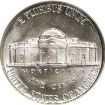
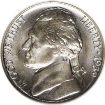
quickly. Needless to say he profited greatly with the mints decision to begin production of small cents, three cent pieces, and with the advent of the new five cent piece.
Although Wharton stood to make more money than anyone else with the production of
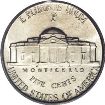
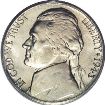
these coins, he also expressed his disapproval of the design. Wharton described the obverse of the coin as "a tombstone surmounted by a cross overhung by weeping willows." He was not alone; the design was also ridiculed by the public as being "the ugliest of all known coins."
Here is a listing of the eight major design changes for this coin:
Shield Type with Rays (1866-1867)
Shield Type no Rays (1867-1883)
Liberty Type no CENTS (1883 only)
Liberty Type with CENTS (1883-1913)
Buffalo Type Raised Ground (1913 only)
Buffalo Type Level Ground (1913-1938)
Jefferson Type Wartime (1942-1945)
Jefferson Type (1938-2003)


